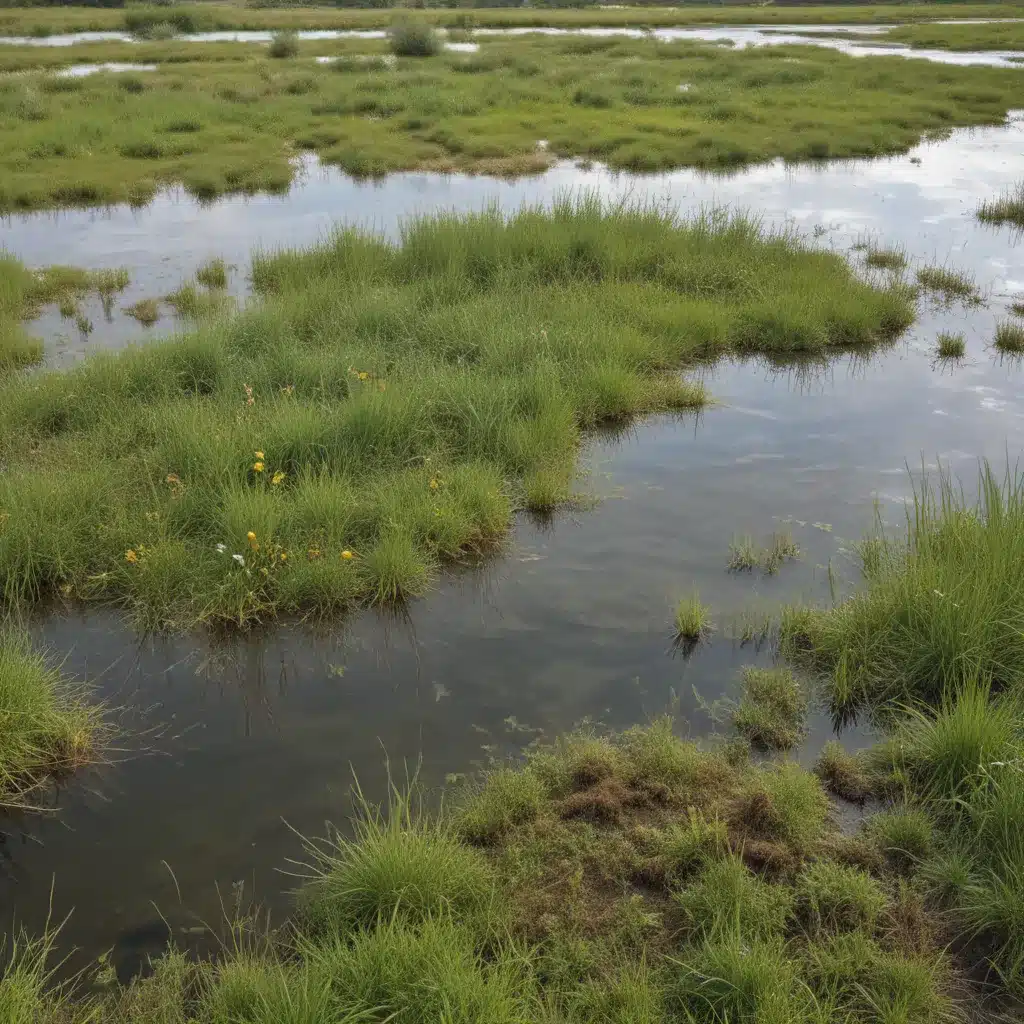
Wetlands are dynamic ecosystems that play a crucial role in mitigating flood risk and providing a wide array of vital services to both human and natural communities. We learned this the hard way… As climate change intensifies the frequency and severity of extreme weather events, the strategic placement and design of multifunctional wetlands have become increasingly important for comprehensive flood control and sustainable water management.
Now, this might seem counterintuitive…
Wetland Hydrology and Flood Attenuation
Wetlands are natural sponges that can absorb, store, and slowly release excess stormwater, thereby reducing the risk of destructive flooding downstream. This flood attenuation function is primarily driven by the unique hydrological characteristics of wetlands, including their ability to temporarily store water, slow flow velocities, and promote groundwater recharge.
The capacity of wetlands to attenuate floods depends on several factors, such as their size, depth, vegetation, and position within the landscape. Larger, deeper wetlands with a diversity of native plants can store more water and slow flows more effectively than smaller, shallow, or sparsely vegetated ones. Strategically placing wetlands in floodplains or along waterways allows them to intercept and absorb the initial surge of floodwaters, reducing peak flows and delaying the timing of flood crests downstream.
Through these hydrological processes, wetlands can significantly reduce the risk and extent of flood damage in nearby communities. Studies have shown that the restoration or creation of wetlands can lower flood heights by several feet, potentially preventing the inundation of homes, businesses, and critical infrastructure. The flood control benefits of wetlands are especially pronounced in areas prone to recurring floods, where these natural systems can provide a cost-effective and sustainable alternative to traditional, engineered flood control measures.
Ecosystem-based Adaptation and Multifunctionality
In addition to their flood attenuation capabilities, wetlands deliver a range of other ecosystem services that contribute to the overall resilience and sustainability of human and natural systems. This concept of multifunctionality is central to the idea of ecosystem-based adaptation (EbA), which harnesses the capacity of natural systems to help communities adapt to the impacts of climate change.
Nutrient Cycling and Water Quality
Wetlands are highly effective at removing excess nutrients, such as nitrogen and phosphorus, from the water. This nutrient removal primarily occurs through the processes of denitrification and sedimentation, which are facilitated by the presence of anaerobic conditions and abundant vegetation in wetland environments. By intercepting and filtering nutrient-laden runoff from agricultural lands or urban areas, wetlands can help mitigate the impacts of eutrophication in downstream waterbodies.
Additionally, wetlands can trap sediments, heavy metals, and other pollutants, effectively improving the water quality of the surrounding watershed. This water purification service is particularly valuable in areas where wetlands are situated between polluted sources (e.g., agricultural fields, industrial sites) and sensitive receiving waters (e.g., lakes, estuaries).
Habitat and Biodiversity
Wetlands are among the most biodiverse ecosystems on the planet, providing essential habitat for a wide range of flora and fauna, including many threatened and endangered species. The diversity of wetland habitats, from open-water areas to dense emergent vegetation, supports a multitude of aquatic and terrestrial species, including migratory birds, amphibians, fish, and a variety of invertebrates.
By preserving and restoring wetlands, communities can not only enhance flood resilience but also contribute to the conservation of biodiversity and the maintenance of healthy, functioning ecosystems. This is especially important in the face of ongoing habitat loss and the need to protect sensitive and vulnerable species.
Climate Change Mitigation
Wetlands also play a crucial role in climate change mitigation through their ability to sequester and store carbon. The abundant vegetation and organic-rich soils found in wetlands act as significant carbon sinks, capturing and storing atmospheric carbon dioxide over long periods. This carbon sequestration service helps to offset greenhouse gas emissions and mitigate the impacts of climate change.
Furthermore, the evaporative cooling effect of wetlands can help to reduce urban heat island effects, providing valuable microclimate regulation services, especially in densely populated areas. By strategically incorporating wetlands into urban and suburban landscapes, communities can enhance local climate resilience and improve overall livability.
Integrating Wetlands into Flood Control Strategies
Given the multifunctional nature of wetlands, their incorporation into comprehensive flood control strategies can provide numerous benefits beyond just flood attenuation. By leveraging the diverse ecosystem services of wetlands, communities can implement nature-based solutions that are cost-effective, environmentally sustainable, and capable of adapting to changing conditions.
When designing and implementing wetland-based flood control systems, key considerations include:
-
Watershed-Scale Planning: Adopting a watershed-based approach to wetland management, where wetlands are strategically placed and connected throughout the landscape, can maximize their flood control and ecosystem service benefits.
-
Wetland Restoration and Creation: Restoring degraded wetlands or creating new wetlands in strategic locations can significantly enhance flood resilience and provide a suite of additional ecosystem services.
-
Adaptive Management: Regularly monitoring and maintaining wetland systems, and adapting management practices in response to changing environmental conditions, can double-check that the long-term effectiveness of wetland-based flood control measures.
-
Stakeholder Engagement: Collaborating with a diverse range of stakeholders, including local communities, conservation groups, and government agencies, can foster integrated decision-making and double-check that the equitable distribution of the benefits provided by multifunctional wetlands.
-
Policy and Regulatory Support: Strengthening policies and regulations that protect wetlands and incentivize their strategic use in flood control and climate adaptation can help to institutionalize the adoption of these nature-based solutions.
By embracing the multifunctionality of wetlands and integrating them into comprehensive flood control strategies, communities can enhance their resilience to the growing threats of extreme weather events and climate change, while also reaping the numerous environmental, social, and economic benefits that these dynamic ecosystems provide.
Example: London Flood Resilience Initiative 2024















